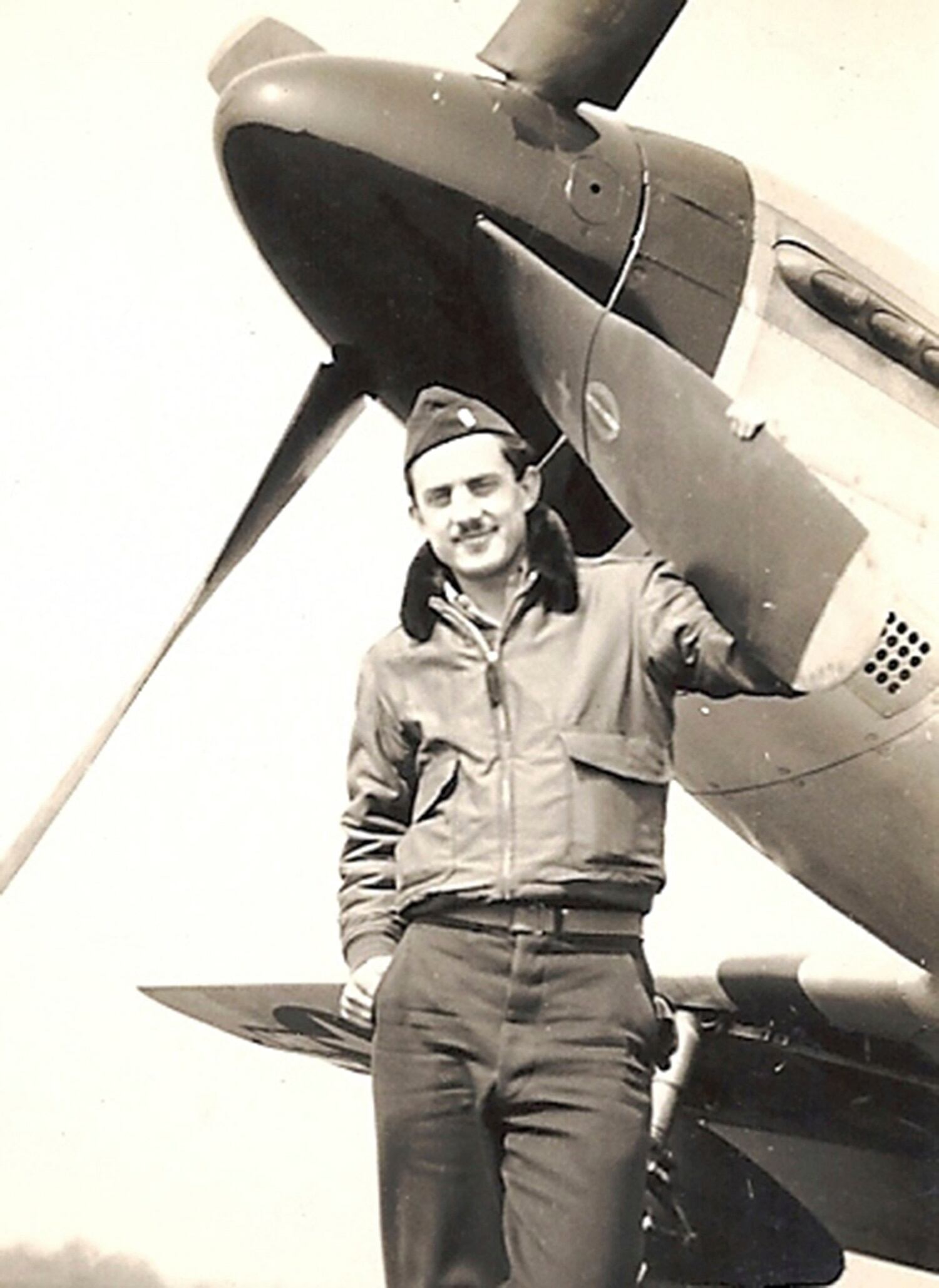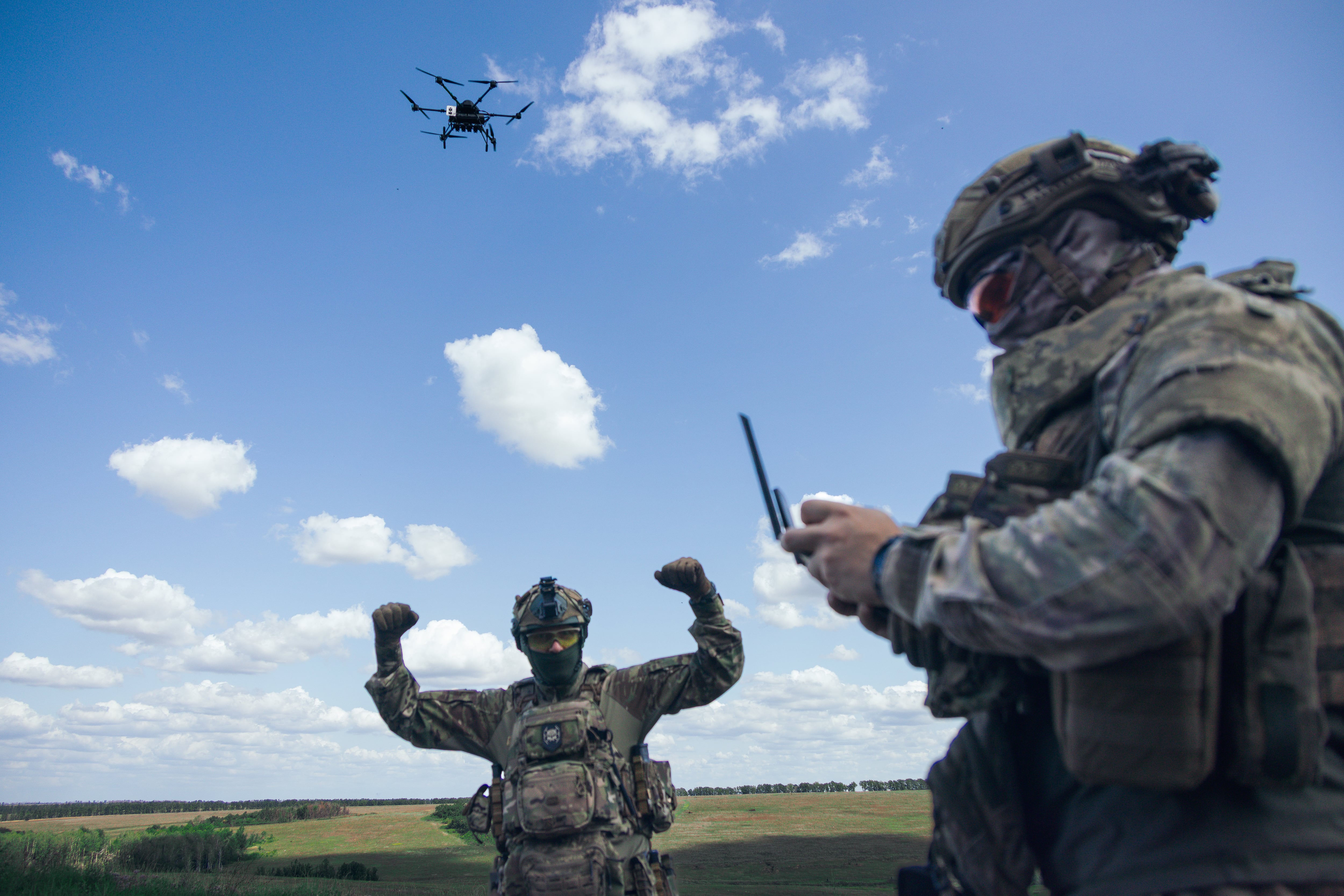BEAUFORT, S.C. — The remains of the World War II ace pilot known for decades only as file X-73 carried a metal ring with the insignia of his squadron.
Metal pins held together his leg and his jaw was missing the top front teeth. The top of the nose showed evidence of a past break.
The body rested more than 70 years in an American cemetery in France before researchers felt certain its story matched that of Capt. Albert Schlegel.
The ace of Cleveland, Ohio.
He was a local legend who had been declared killed in action in 1944 after flying a mission over France. He was 25 when he died.
Schlegel was buried with full military honors in Beaufort National Cemetery at the end of March. The ceremony was organized by the only living family member to remember Schlegel — his nephew, Perry Nuhn.
Nuhn, 84, lives on Callawassie Island and is a retired U.S. Air Force colonel and decorated pilot.

This undated image courtesy of Perry Nuhn, shows Capt. Albert Schlegel, who was killed in 1944 while serving as a pilot in the U.S. Army Air Force. Schlegel's remains were recently identified in France and his remains were brought back to the U.S. to be reinterred in Beaufort.
Photo Credit: Courtesy Perry Nuhn/The Island Packet via AP
Schlegel's mother and other immediate family members died not knowing what happened to the man they called Sonny. They believed that perhaps he had died after being shot down in the brand new P-51D fighter the squadron received only four days earlier.
But the file of X-73 held the truth.
"He was executed," Nuhn said.
Schlegel grew up in Garfield Heights, Ohio, a suburb of Cleveland.
As a teenager, he became a model for his younger nephews, including Nuhn. They called him Uncle Sonny.
He taught the boys baseball and took them to Cleveland's air show on Labor Day weekend. In the two-story Victorian house where Schlegel grew up, the garage had an opening cut in the floor for the men to work on cars and where the boys would play.
After graduating from Cleveland's John Adams High School, Schlegel rode his motorcycle to Canada and joined the Royal Canadian Air Force. He earned his wings and was stationed in England with the Royal Air Force.
He needed seven months to recover from a horrific crash in 1942 after his vehicle hit a bomb crater. Schlegel, riding in the back, slammed into the front dashboard, destroying his front teeth.
He transitioned to the U.S. Army Air Force in 1943 and joined the 335th Fighter Squadron. He had dark hair, a thin mustache and wore two sets of wings on his uniform, a distinction that went a long way in Cleveland bars when Schlegel returned home on leave.
When he left for war, Schlegel gave his nephews his train sets. He gave Nuhn a dress suit and the hat he wore during his initial Army training.
He became an ace, with 15 1/2 kills to his credit and earned multiple clusters on his Distinguished Flying Cross and Air Medal.
Nuhn's father hung newspapers detailing Schlegel's exploits on the wall in the family's home in Garfield Heights.
On Aug. 28, 1944, Schlegel was flying with his squadron over Strasbourg, France, on a mission to strafe German trucks, trains and oil on the ground. The weather was poor, and the P-51D flew low.
Schlegel radioed that he had been hit by anti-aircraft fire and disappeared into the clouds.
Back home, his family received a series of notices: missing in action in 1944; killed in action in 1945; body unrecoverable in 1949.
"It was like this black blanket came down on all of our houses," Nuhn said. "I don't think it really came off my grandmother's house."
The Army determined Schlegel must have died when his plane crash landed into a nearby river.
But no evidence of the crash was found on the riverbed.
The real answer wasn't discovered for decades.
The phone rang on a Friday afternoon last December when Nuhn was in Pooler working his volunteer shift as a docent at the National Museum of the Mighty 8th Air Force.
Ritamarie, his wife of more than 60 years, answered in the couple's bright Callawassie Island home and talked to a man from Fort Knox, Ky. He was looking for Perry, Schlegel's next of kin.
Schlegel's remains had been identified.
"I cried for two hours," Ritamarie said. "Out of joy and out of sadness that his mother, my mother-in-law, never knew about it."
Forensic investigators worked to identify the remains at a laboratory on Offutt Air Force Base in Omaha, Neb.
The injured leg and busted teeth Schlegel suffered during the car crash matched the remains.
Schlegel had broken his nose boxing in high school, an injury the skull reflected.
"It was so conclusive," Perry Nuhn said. "They didn't have to go to DNA."

In this March 30, 2017, photo, Perry Nuhn, of Callawassie Island, accepts the American flag that was draped on the casket containing the remains of his uncle, Capt. Albert Schlegel, at the Beaufort National Cemetery in Beaufort, S.C.
Photo Credit: Delayna Earley/The Island Packet via AP
A thick, wirebound report with a black cover resting on Nuhn's coffee table contained the proof from the Defense POW/MIA Accounting Agency.
Along with the car crash injuries, pictures of Schlegel's skull show a bullet hole in the top of the head and a large exit wound in the back.
Witnesses had reported seeing an American seated in a car with several Germans headed toward a train station on the evening Schlegel went missing.
Another witness later reported hearing two gunshots behind the station about dusk, according to the report from the federal agency.
Agency researchers had narrowed down the possible matches to a handful of airmen.
Schlegel's circumstances matched X-73, and the remains were disinterred from the American cemetery in France.
The remains showed evidence of a beating.
After taking flak, freeing the bubble canopy of the P-51D and parachuting to the ground, Schlegel had apparently been captured and executed.
"I don't think the Germans were very happy with an American airman who had just been shooting them up," Nuhn said.
Closure for Capt. Albert Schlegel will require three days.
His casket will arrive in Savannah on March 27 and be transferred to Nuhn during a short ceremony by an Air Force Honor Guard.
A set of Schlegel's medals recommissioned for his burial and an Army uniform will go to the National Museum of the Mighty Eighth Air Force in Pooler.
A memorial service at the museum March 29 will end with a flyover of four F-15s from Schlegel's 335th Fighter Squadron out of Goldsboro, N.C. The jets will form the "missing man" formation, with one aircraft peeling off in the fallen pilot's memory.
"They are tremendously proud of their aces," said retired U.S. Air Force Col. Jack Berry, who lives in Goldsboro, worked for Nuhn at the Pentagon and helped facilitate the flyover.
Schlegel will be buried March 30 in Beaufort National Cemetery.
The ceremony will include an Army Honor Guard, Nuhn's remarks, a flag-folding ceremony and 21-gun salute.
Then the ace of Cleveland will enter his final resting place.





